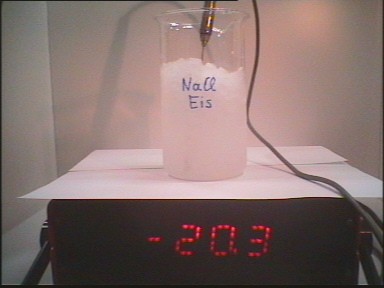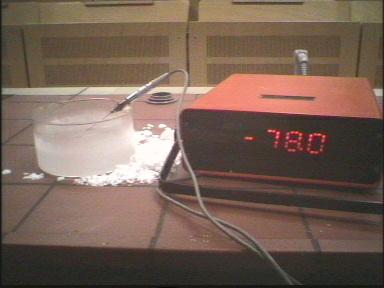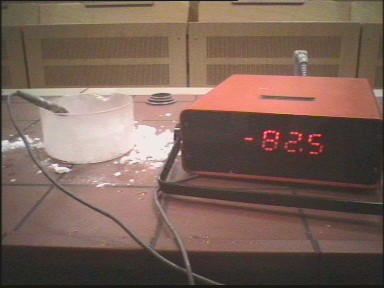| Photo1: |
Ice water/sodium chloride is the standard laboratory freezing mixture.
It is possible to reach temperatures of - 20 °C with this mixture. |
| Photo2: |
Even lower temperatures can be reached with a freezing mixture of ice
water/hydrous calcium chloride. According to the literature, temperatures
as low as - 55 °C can be obtained using this mixture. However, we were
unable to reach such temperatures even after repeated tries. |
| Photo3: |
It takes more of an effort to reach lower temperatures. One can go
as low as - 78 °C using a combination of acetone and dry ice. |
| Photo4: |
Even lower temperatures can be realized using a combination of diethyl
ether/dry ice. The literature says temperatures down to - 100 °C can
be reached using this mixture. However, we were unable to reach this even
after multiple experiments. This mixture, as well as the calcium
chloride/dry ice combination, is most likely highly dependent upon the
relative proportion of the reactants. |







